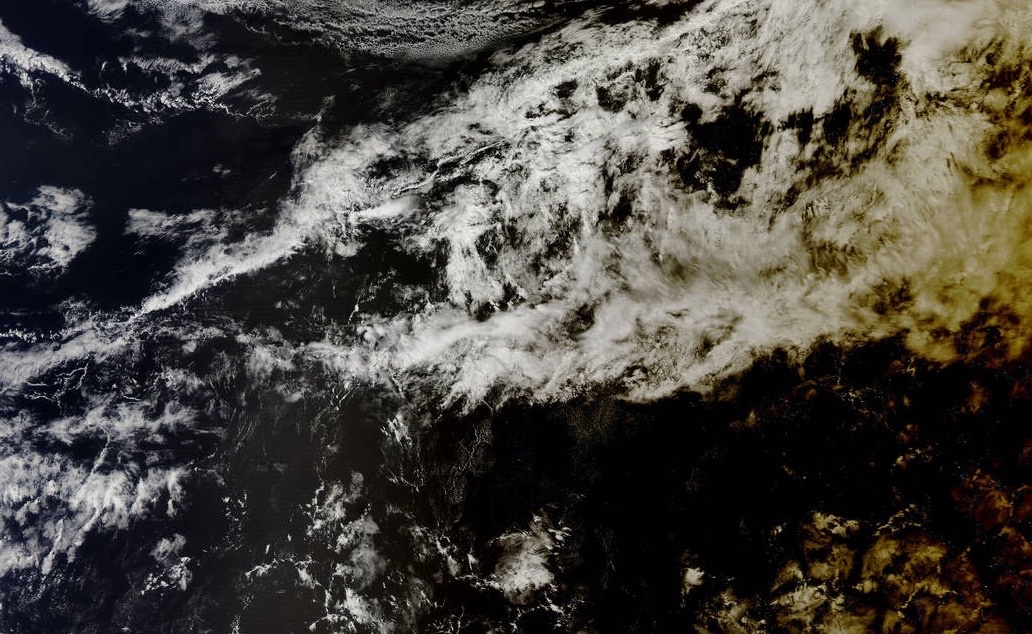Shadow of the Moon: Satellites See Total Solar Eclipse from Space (Photo)


The moon's shadow covers part of the South Pacific Ocean like a ragged brown blanket in newly released satellite photos of Tuesday's (March 8) total solar eclipse.
The most breathtaking satellite view so far of the 2016 total solar eclipse comes from NASA's Suomi-NPP. The Earth-watching satellite used its VIIRS instrument to capture a view of the moon's shadow on Earth's Pacific Ocean during the eclipse.
"There's no #oceancolor in a moon shadow, moon shadow, moon shadow," NASA officials wrote on Twitter in an image description by the agency's @NASAOceans team. [See photos of the 2016 total solar eclipse]
Another image was captured by NASA's Aqua satellite at 10:05 p.m. EST Tuesday (0305 GMT on Wednesday, March 9). It provides a bird's-eye view of the total solar eclipse, which was visible from the ground only along a 90-mile-wide (145 kilometers) path that stretched through Sumatra, Sulawesi, Borneo and other islands eastward into the Pacific northeast of Hawaii.
Tuesday's event was seen as a partial solar eclipse by skywatchers in a much broader swath that included Hawaii and parts of Alaska, Australia and Southeast Asia.
There will be no more total solar eclipses this year. However, on Sept. 1, parts of Africa will be treated to an "annular eclipse," in which the moon blots out most of the sun but leaves a ring blazing around the outside of the solar disk.
And skywatchers in the United States should circle Aug. 21, 2017 on their calendars. On that date, a total solar eclipse will be visible from a path that stretches from Oregon all the way to South Carolina — a highly anticipated event that has been dubbed the "Great American Eclipse."
Breaking space news, the latest updates on rocket launches, skywatching events and more!
The Aqua satellite launched in 2002. Its chief mission involves collecting a variety of information about Earth's water cycle. The Suomi-NPP satellite launched in 2011. Its name is short for Suomi National Polar-orbiting Partnership and the satellite is a joint mission by NASA and National Oceanic and Atmospheric Administration.
Editor's note: If you safely captured an amazing photo of Tuesday's total solar eclipse and would like to share it with us and our news partners for a story or gallery, send images and comments in to Managing Editor Tariq Malik at spacephotos@space.com.
Follow Mike Wall on Twitter @michaeldwall and Google+. Follow us @Spacedotcom, Facebook or Google+. Originally published on Space.com.

Michael Wall is a Senior Space Writer with Space.com and joined the team in 2010. He primarily covers exoplanets, spaceflight and military space, but has been known to dabble in the space art beat. His book about the search for alien life, "Out There," was published on Nov. 13, 2018. Before becoming a science writer, Michael worked as a herpetologist and wildlife biologist. He has a Ph.D. in evolutionary biology from the University of Sydney, Australia, a bachelor's degree from the University of Arizona, and a graduate certificate in science writing from the University of California, Santa Cruz. To find out what his latest project is, you can follow Michael on Twitter.

